As we enter the second half of 2020, we find ourselves more prepared and vigilant when it comes to COVID-19 precautions and safety measures. There are no universal safety measures when it comes to the coronavirus, but the experts agree that a combination of stringent hand hygiene and social distancing does work well on preventing the spread of the virus.
Parents do have a very valid question on their minds — can preschoolers actually practice the rules of social distancing in school? How can a three-year-old remain in her place, not collide with or hug her friends, or hold a teacher’s hand?
Children, as it turns out, are extremely intuitive and mature. A parent I talked to told me that her five-year-old child, who is normally very hyperactive, did practice all aspects of social distancing that her parents had explained to her when they visited the park and a few shops, wearing masks and gloves. This is because the parents had explained things to her very patiently and they had modeled the behavior to her. Hand hygiene, for instance, was constantly emphasized at home and the family created a warm, safe space for her in their home but did attune her to the reality of a post-COVID world outside, one that they would all have to adjust to for some time.
The idea of being conscious of one’s environment and space is especially prevalent in an authentic Montessori. We follow a child-led learning philosophy, and this can pose some useful solutions.
I do know that during this outbreak, children hav3e been profoundly missing outdoor play and playground time. Children have an innate desire to play and be outdoors. A playground visit, when done with all safety precautions, can be a breath of fresh air, a much-needed respite from being cooped up at home continuously. Also, unlike indoor spaces, outdoor playgrounds have fresh air and you can put more physical space between people.
At Alpha Montessori, we have been practicing social distancing in the school playground. Here’s how we do it.
The environment is the teacher
The Montessori philosophy encourages children to be highly conscious and respectful of their environment. Children work both in groups and independently. They respect each other’s boundaries and personal space. Self-discipline is something that comes naturally to them, be it returning materials to the shelf after use, or taking responsibility for the environment and their work.
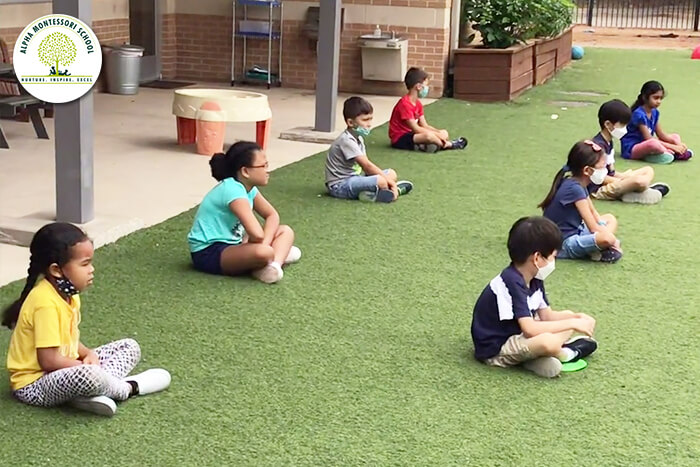
We take this practice one step further by modeling social and physical distancing to our children. Children need simple steps, visual cues and routines to develop social distancing habits. It may appear daunting, but it is not impossible. Children are very adaptable and are able to form new habits if habits are practiced consistently, this is why we are so thorough in practice social distancing measures.
Help your child stay active
Encourage your child to play outdoors—it’s great for physical and mental health. Take a walk with your child or go on a bike ride. Use indoor activity breaks (like stretch breaks or dance breaks) throughout the day to help your child stay healthy and focused.
Creating protective bubbles
According to the CDC guidelines, small groups and activities are best encouraged during this time. At Alpha, we encourage students and teachers to stay in small groups. They play in these micro-groups or bubbles. Groups do not mingle. Each group of children stays in their separate zone in the playground and the group is facilitated by one adult. Face masks are used by the supervising adults.
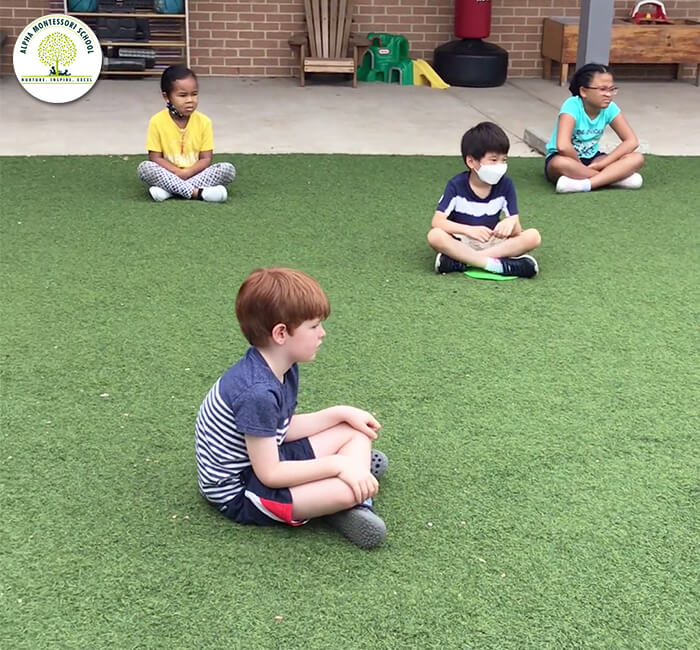
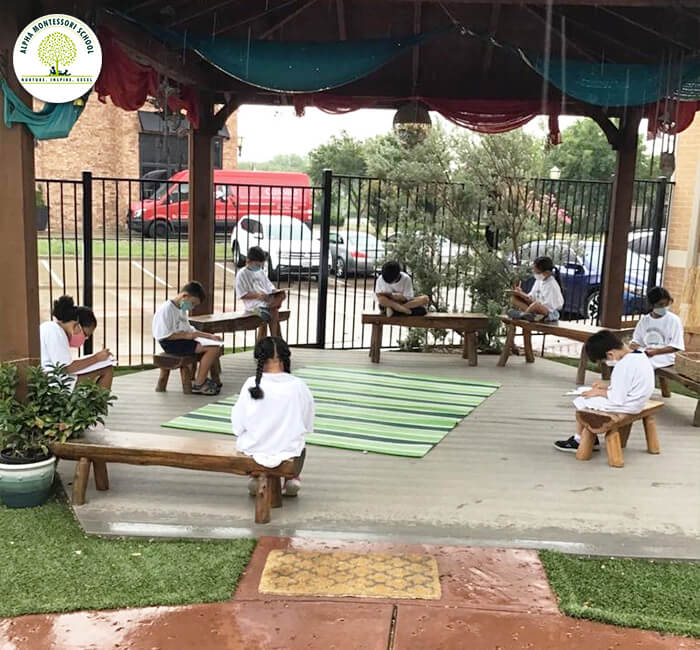
We use social distancing pods, for instance, to get children to sit in a specific space and we use a chalk or painter’s tape circle to draw around them. We continuously talk, engage with the children and make conversation while they are in their pods so that they don’t feel isolated. This usually does the trick in keeping them inside. We also model this among our adults, including fun ‘air hugs’ that some of our children perform with so much gusto, and this creates a positive experience.
Playground hygiene
According to the CDC, playground surfaces should be made of plastic or metal and they need to be cleaned regularly. We sanitize the playground area consistently and especially after every play session. We do not encourage children to share objects, such as balls or items of play. We keep each group to a minimum of 4-6 children.
Assigning activity zones
An activity zone is a good way to space out groups of children. This prevents children from walking away and forgetting about social distancing in the playground. Circles in chalk are drawn on the ground to encourage children to maintain the required distance between them when waiting to play a game or use a swing, for example. We color code spots for active players and spots for those waiting to take their turn in a game.
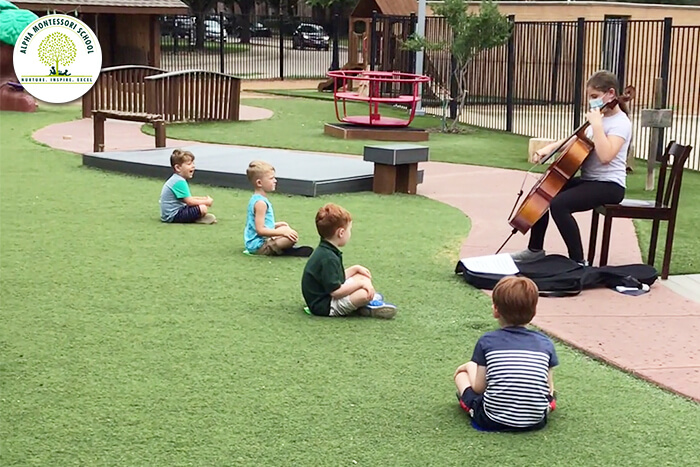
We will redistribute groups to different activity zones during the day. We also observe stringent social distancing among adults, who also wear masks. We will also stagger playground times and will limit the number of groups outside. We will also give parents specific windows of time in which to pick up their kids so that we don’t have families crossing paths.
Play social distancing games and make it fun
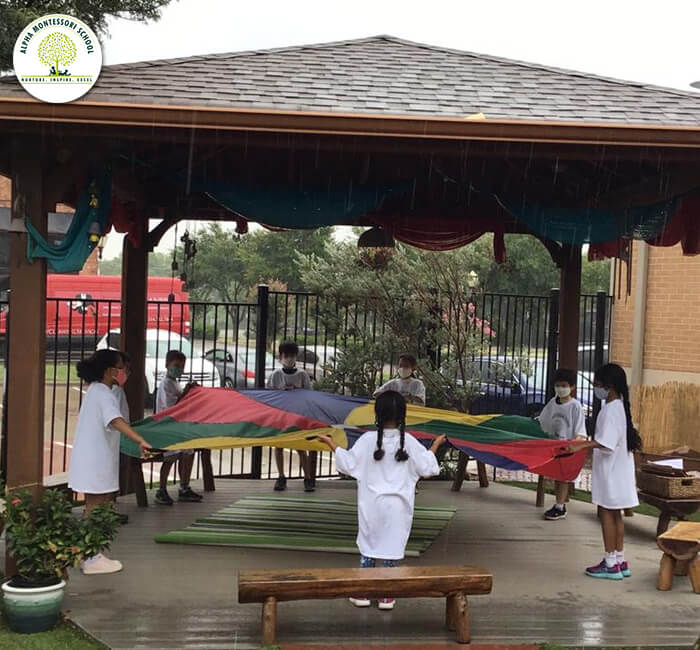
Sure, it’s unsettling to see children, usually so full of joy and without reservations, being asked to stand in circles or hoops but let’s face it, the pandemic will affect our lives for a fair amount of time. However, I believe that the effects of staying indoors continuously can take a worse toll on children than asking them to sit inside circles. If we explain it to them in a way they understand and talk to them, tell them that this is not permanent, they will adapt pretty quickly. Children are built to learn and adapt to their environment.
At Alpha Montessori, we play fun social distancing games to get children to understand the need to stay 6 feet apart. We use songs, action-based rhymes, storytelling, and fun cues to reinforce the idea of social distancing.
According to Dr. Sean O’Leary, vice chairman of the American Academy of Pediatrics’ Committee on Infectious Diseases, children are not the primary vectors of disease, and adults spread it faster than children. We ensure that as Montessori adults, we observe stringent hygiene and sanitization protocols. Temperature checks and masks are mandatory, and we make sure that adults who are unwell do not come to school.
Of course, this isn’t an ideal scenario! Children are meant to play, hold hands, hug, and enjoy an unfettered childhood. I have, however, personally seen how meeting their friends, talking to them, meeting other children and their Montessori adults can do them a world of good. I know parents who tell me that they crave this interaction. Our children are wiser than we give them credit for and while this is not the best of times, these are teachable times and can certainly encourage us to stay stronger and to help one another out. On our part as teachers, we promise to take meticulous action and enforce discipline on ourselves as adults so that your children get to play.
Help your child cope with stress
If you notice your child having a particularly difficult adjusting to changes, offer some help. The CDC has a list of ways parents can help with adjusting. Make sure to watch for signs of stress or behavior changes. Not all children respond to stress in the same way. Some common changes to watch for include:
- Excessive worry or sadness
- Unhealthy eating habits
- Unhealthy sleeping habits
- Difficulty with attention and concentration

 August 4th, 2020
August 4th, 2020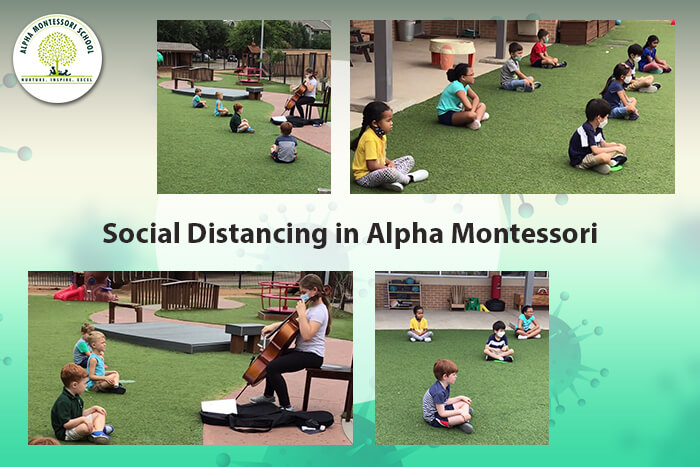

I don’t think the title of your article matches the content lol. Just kidding, mainly because I had some doubts after reading the article.
Thank you for your sharing. I am worried that I lack creative ideas. It is your article that makes me full of hope. Thank you. But, I have a question, can you help me?
Your point of view caught my eye and was very interesting. Thanks. I have a question for you.
Your point of view caught my eye and was very interesting. Thanks. I have a question for you.
I don’t think the title of your article matches the content lol. Just kidding, mainly because I had some doubts after reading the article.
Thank you for your sharing. I am worried that I lack creative ideas. It is your article that makes me full of hope. Thank you. But, I have a question, can you help me?
Thank you for your sharing. I am worried that I lack creative ideas. It is your article that makes me full of hope. Thank you. But, I have a question, can you help me?
Can you be more specific about the content of your article? After reading it, I still have some doubts. Hope you can help me.
Can you be more specific about the content of your article? After reading it, I still have some doubts. Hope you can help me.
This makes laser a strong choice to various other teeth lightening options.
покер научиться играть видео
https://t.me/s/poker_nauchitsya_igrat_video
Thank you for your sharing. I am worried that I lack creative ideas. It is your article that makes me full of hope. Thank you. But, I have a question, can you help me?
mrwAq1juHUW
J2EcMTeuASX
GaKv2jx7Qxo
jlrXgwqoNKz
DEw3uuIoYbI
4BVohXrC6aO
Your point of view caught my eye and was very interesting. Thanks. I have a question for you.